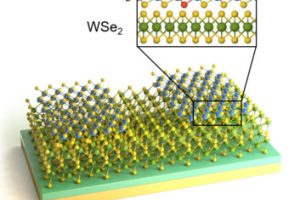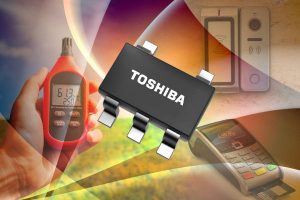Nexperia has unveiled analogue switches that can work with control logic from 1.8 to 5V, regardless of supplies between 1.5 and 5.5V. There are two versions: NMUX1308, an 8:1 analogue multiplexer/demultiplexer which is compatible with, but more capable than, existing 4851 and 4051 analogue switches, and the NMUX1309 dual 4:1 analogue mux/demux which can replace 4852 and 4052 devices. All ...
Tag Archives: cmos
Nanusens steps towards CMOS integration for its MEMS sensor
Nanusens has designed an all-digital capacitance measurement circuit to integrate alongside its MEMS sensors. “This means that both the sensor structure and its detection circuitry can be made at the same time within a chip using standard CMOS processes on whatever process node is required,” said the Devon, UK company. “As a result, ASICs can now be made with several ...
p-type 2D transistors mean atomically-thin CMOS is not far away
Van der Waals metal contacts could be the key to CMOS made from thin-film 2D semiconductors, according to the Korea Institute of Science and Technology (KIST), which has made contacts from chlorine-doped tin diselenide. “It was difficult to implement complementary logic circuits with conventional two-dimensional semiconductor devices because they only exhibit the characteristics of either n-type or p-type devices due to ...
IBM beats finFETs with vertical CMOS at IEDM
IBM revealed vertical FET CMOS logic at a sub-45nm gate pitch on bulk silicon wafers at the IEEE International electron devices meeting in San Francisco this week. IBM’s VTFET with a vertical channel (yellow) and gate-all-around (blue). Contacts are brown and the white line shows current flow. It calls them VTFETs, for vertical transport FETs, and is describing the channel cross-section ...
SiGe, Ge-on-Si and CMOS combined at Bristol for quantum record
Researchers from the University of Bristol have made a detector to measure quantum features of light in more detail than ever before, with a sensor “clocked at an order of magnitude faster than the previous state-of-the-art,” said Bristol. It was used to measure the unique properties of ‘squeezed’ quantum light at record high speeds, according to the university’s Quantum Engineering Technology ...
Toshiba CMOS op-amp draws only 0.27μA
Toshiba has released an micro-power CMOS operational amplifier, drawing a maximum of 600nA and typically 270nA (1.5V supply, -40 to 105°C). Called TC75S102F, it will run from supplies between 1.5V and 5.5V and is rail-to-rail on both input and output. Unusually for an op-amp, no input excursion outside the rails is allowed at all. “Operational amplifiers have a multitude of uses including ...
Re-updated: Handy pulse stream divide-by-n for the lab
Presented with a rotary sensor challenge, I needed a divide-by-13 for a pulse stream. The correct answer was to programme an 8pin ATtiny85 to do the job, but I didn’t want to be distracted by re-climbing the programming learning curve. Circuit (right) updated to avoid potential mis-counts So I had a quick Google for a one-chip answer and came across ...
Improved: isolated wide range zero-crossing detector needs no power switch
A while ago I needed a piece of test gear – an isolated way to transfer zero-crossing information from a variable ac power source: 1Vp-p to 200Vp-p 1Hz to ~1kHz The exact zero crossing point is not important in this application, as long as some point in each cycle is transferred across consistently. And this is what I came up ...
Leti makes CMOS at 500°C for 3D sequential chips
CEA-Leti scientists have made FDSOI CMOS at 500°C, “while showing strong performance gains especially in p-type MOS logic devices”, according to the French lab, which has branded the process ‘CoolCube’. 500°C processing is important when trying to shrink die by building CMOS with p-channel mosfets above rather than next to their n-channel counterparts – called a ‘3D sequential’ structure. If too much ...
More on: MIT’s carbon nanotube RISC-V CPU
Last week MIT announced a CPU made from carbon nano-tube (CNT) mosfets using standard CMOS fab equipment and only the materials and processes found within commercial CMOS fabs. Electronics Weekly has delved inside to see how it works. In essence, the CNT logic is CMOS, as the researchers have found a way to create p-channel CNT mosfets and n-channel mosfets with ...
 Electronics Weekly Electronics Design & Components Tech News
Electronics Weekly Electronics Design & Components Tech News









